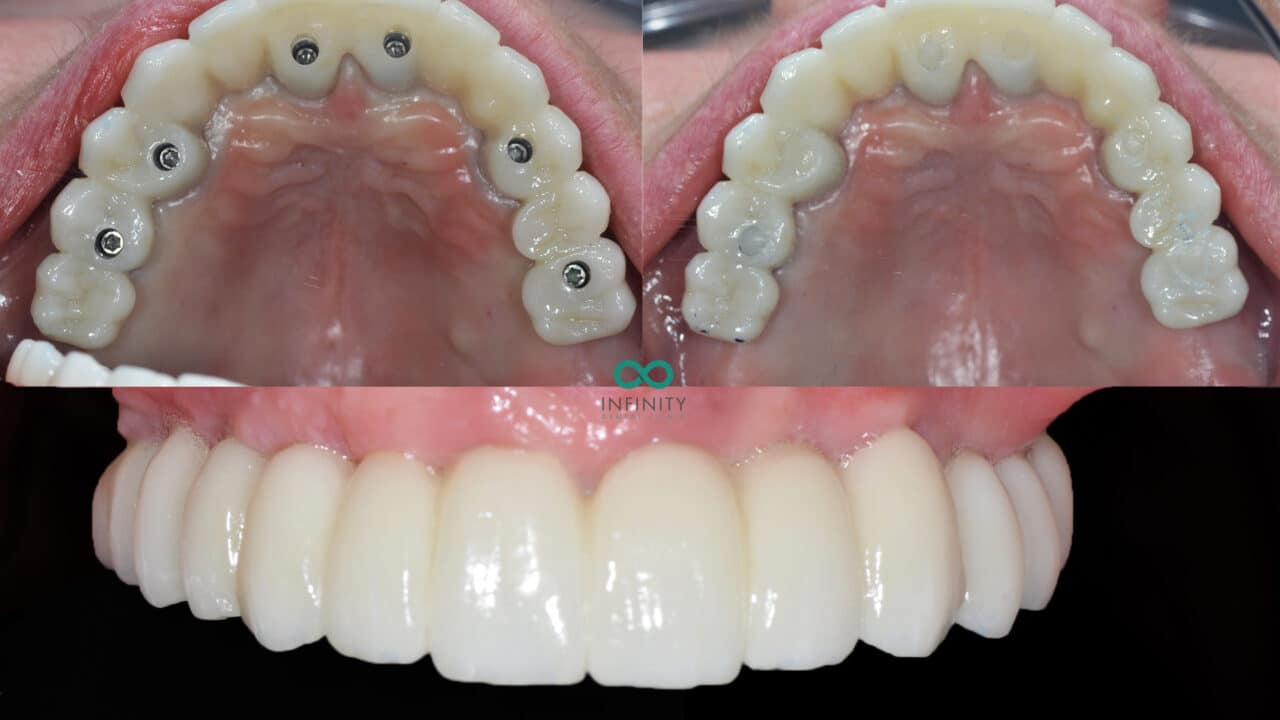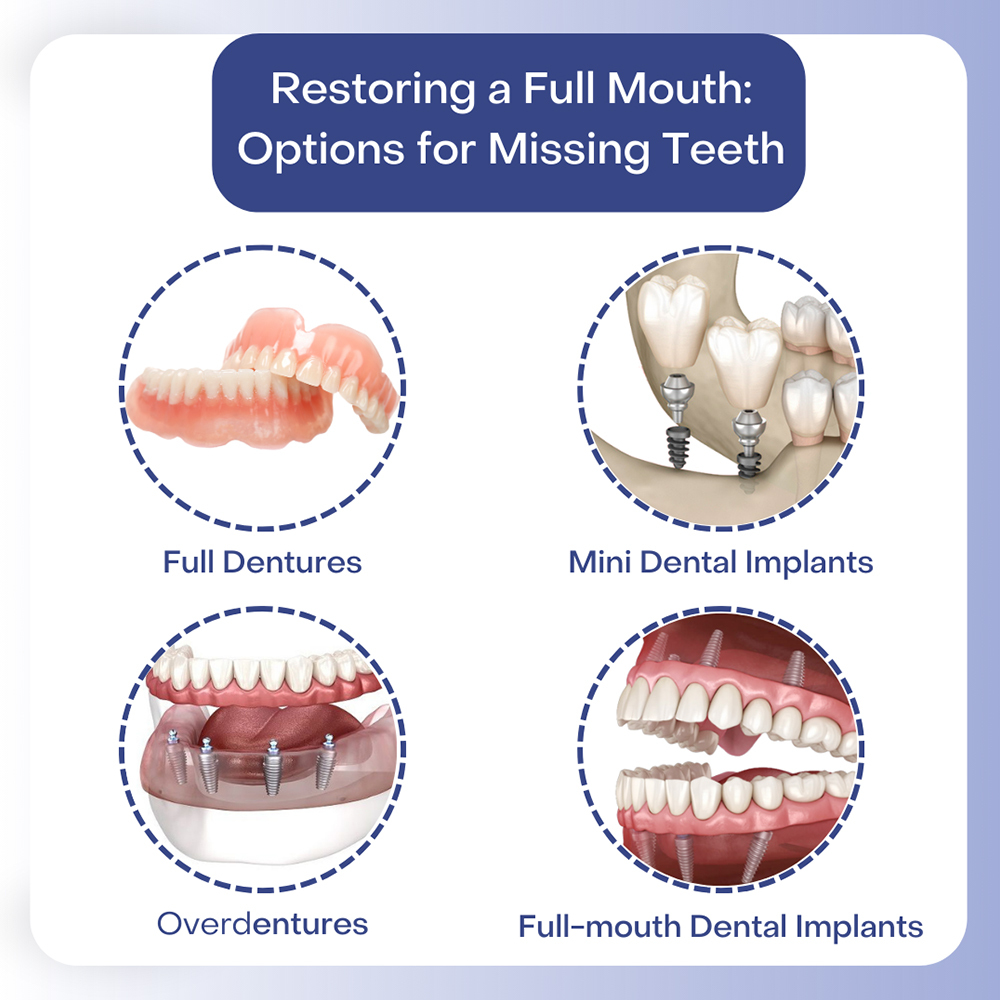Dental Sense Fundamentals Explained
Dental Sense Fundamentals Explained
Blog Article
The Only Guide to Dental Sense
Table of ContentsGetting My Dental Sense To WorkOur Dental Sense PDFsFascination About Dental SenseAn Unbiased View of Dental Sense
are medical devices surgically implanted into the jaw to restore a person's ability to eat or their appearance. They supply support for synthetic (fake) teeth, such as crowns, bridges, or dentures. When a tooth is lost because of injury or illness, an individual can experience difficulties such as quick bone loss, faulty speech, or adjustments to eating patterns that lead to pain.Oral dental implant systems contain a dental implant body and dental implant abutment and may likewise consist of a joint fixation screw. Front tooth filling. The oral implant body is surgically inserted in the jawbone in location of the tooth's root. The oral implant joint is generally affixed to the dental implant body by the abutment addiction screw and prolongs through gums right into the mouth to sustain the affixed fabricated teeth
(https://www.tripadvisor.in/Profile/dentalsense1)Structure of The Dental Implant System selecting oral implants, talk to your dental service provider concerning the potential advantages and dangers, and whether you are a prospect for the treatment. Points to consider: Your overall health is an essential element in establishing whether you are a good candidate for oral implants, for how long it will certainly take to recover, and exactly how long the implant might remain in place.
Smoking cigarettes might influence the healing procedure and reduce the long-lasting success of the implant. The healing process for the dental implant body may take numerous months or longer, throughout which time you commonly have a temporary abutment instead of the tooth. the dental implant treatment: Meticulously adhere to the oral hygiene guidelines offered to you by your dental provider.
The smart Trick of Dental Sense That Nobody is Talking About
Implant failure can lead to the demand for an additional procedure to take care of or replace the implant system. Restores the capability to eat Brings back cosmetic appearance Assists maintain the jawbone from reducing because of bone loss Maintains the health and wellness of the surrounding bone and gums Aids keep surrounding (neighboring) teeth steady Boosts quality of life Damages to surrounding natural teeth throughout dental implant placement Injury to the surrounding cells throughout surgical treatment, such as sinus perforation Injury throughout surgical procedure (for instance, fracture of bordering jawbone) Inadequate feature, such as seeming like the teeth do not bite with each other generally A sensation that the tooth is loosened or twisting in area arising from a joint screw loosening Implant body failure (looseness of the dental implant body) because of systemic infection, which may be you could look here most likely in patients with unrestrained diabetes because of local infection in bone and gums sustaining the implant body because of delayed recovery, which may be most likely in individuals that smoke Difficulty cleansing the gum tissues around the implant, resulting in bad oral hygiene Without treatment gum condition Post-surgical tingling because of nerve impingement or damages Constantly alert healthcare carriers and imaging professionals that you have dental implants before any kind of magnetic resonance imaging (MRI) or x-ray procedures.
FDA is not familiar with any unfavorable events reported for MRI or x-ray procedures with oral implants. Dental implants systems are normally made from materials that follow worldwide consensus standards of the International Organization for Standardization (ISO) or ASTM International. These standards have details of what makes a safe material.

An oral implant is a structure that replaces a missing out on tooth. With screw-like gadgets, the specialist inserts an implant right into the jawbone, and it acts as a support for an artificial tooth, called a crown. A gadget called a joint attaches the fabricated tooth to the dental implant. The crown is tailor-made to fit the individual's mouth and match the shade of their teeth.
The Of Dental Sense
Some individuals are not eligible for oral implant surgical procedure. It is for dental doctors to operate individuals with: acute illnessuncontrollable metabolic diseasebone or soft tissue illness or infectionIf these concerns are settled, a person can have the surgery. In, oral doctors avoid from operating people with: If individuals with any one of the above undergo oral implant surgery, there is a greater danger of the implant stopping working.

Oral implant surgical procedure is an individualized procedure. Give you time to recover. Connect the post and final crown, bridge or denture.
Next off, your surgeon will very carefully put the dental implant right into your jaw. If your implant is near the front of your mouth, your dental practitioner will make a momentary tooth for you to wear until you heal.
The smart Trick of Dental Sense That Nobody is Talking About
Your service provider can inform you what to expect in your situation. Throughout the healing stage, your jawbone should fuse to the oral implant. This process, called osseointegration, is critical for stability and long-lasting success. This process can take anywhere from three to 9 months. In some cases, it may take much longer.
Once your implant heals, your dentist can affix the abutment (little port message) and your final restoration (crown, bridge or denture). This typically takes regarding one hour to complete and might need a second small surgery. You shouldn't really feel any kind of pain throughout your dental implant treatment since your company will certainly make use of medicine to numb your periodontals.
Report this page